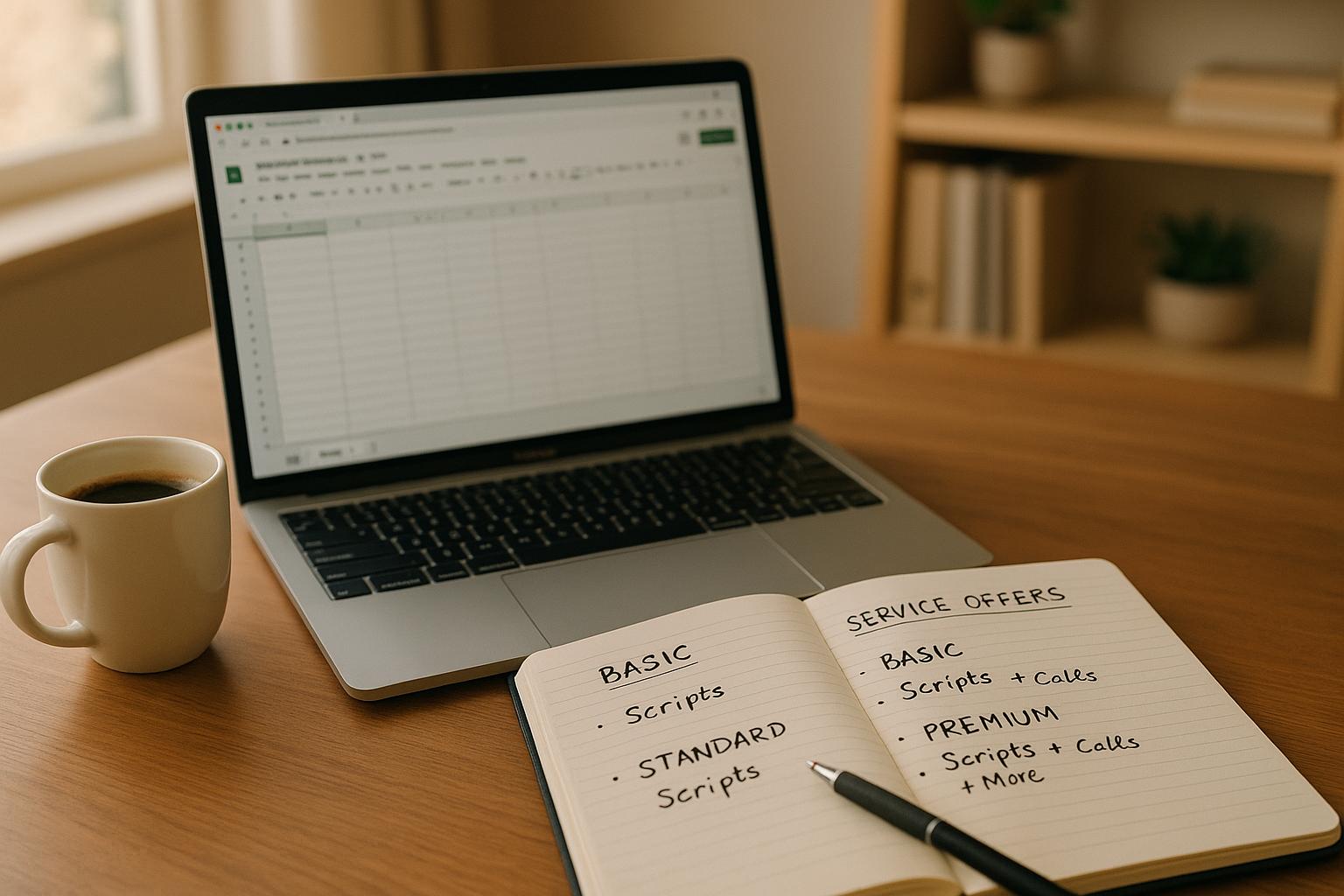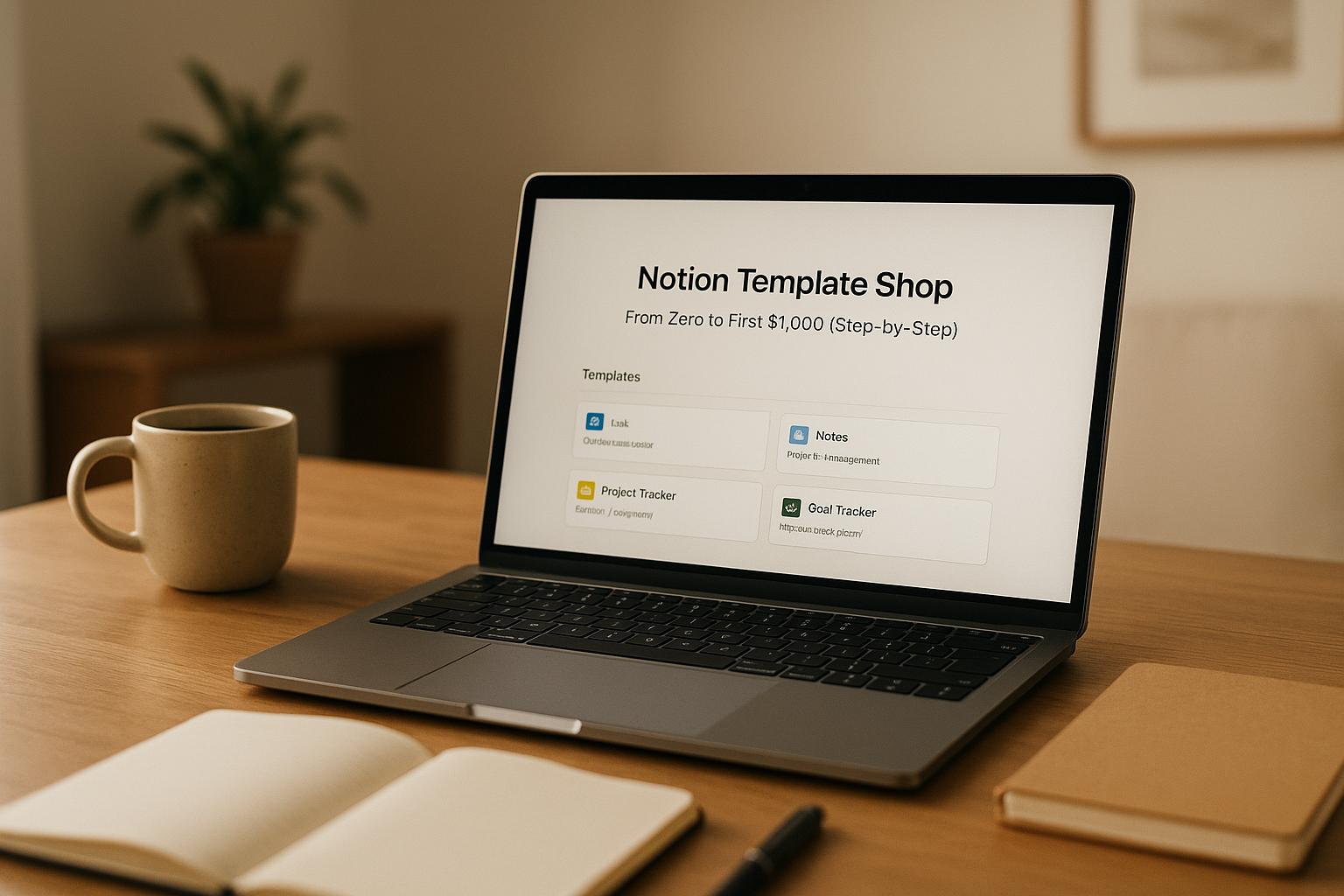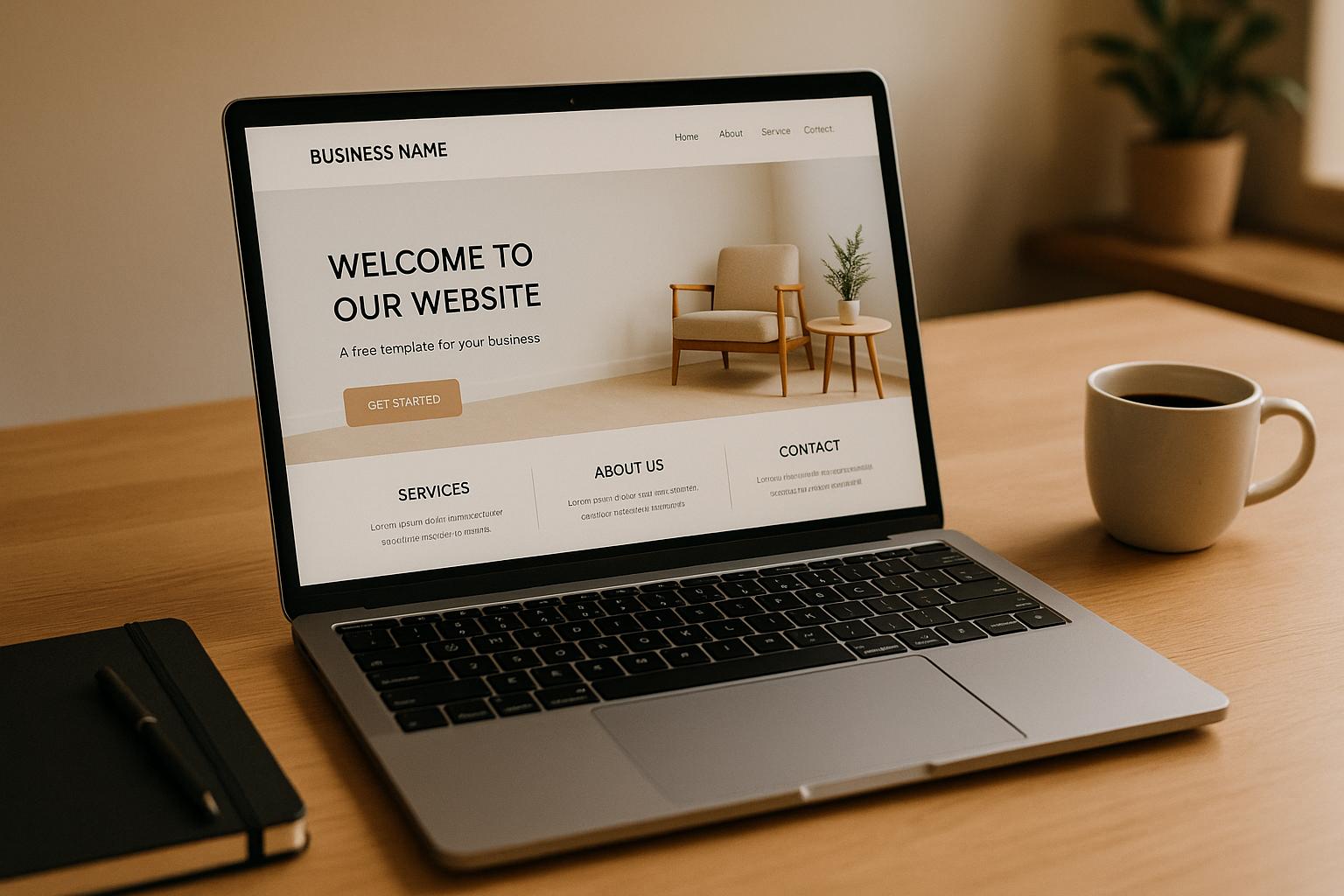
Yes, you can. Starting a business with $100 is possible by focusing on low-cost strategies, digital tools, and solving specific customer problems. Here's how:
- Keep Costs Low: Spend on essentials like a domain name ($10–$15/year) and a basic logo ($20). Use free or affordable tools for marketing, website building, and operations.
- Leverage Free Tools: Platforms like MailerLite (email marketing) and Canva (design) help save money while maintaining quality.
- Focus on Skills: Offer services or products based on what you're already good at, like Lisa's handmade jewelry business or Mike's dog walking service.
- Use Zero-Cost Marketing: Build a social media presence, engage with local communities, and create referral systems to grow without spending on ads.
Quick Breakdown of Key Tips:
| Priority | Action | Cost |
|---|---|---|
| Website Setup | Domain + Hosting | ~$60/year |
| MVP Development | Start small with basic materials | ~$40 |
| Marketing | Use free tools and social media | $0 |
By starting small, testing ideas, and reinvesting profits, even a $100 budget can lead to a thriving business. Ready to take the first step?
Success Stories: $100 Startups
Lisa's Jewelry Making Business
Lisa Jacobs transformed a $100 investment in jewelry supplies into a six-figure Etsy store. Her success came from focusing on three core areas:
| Key Focus | How She Did It |
|---|---|
| Product Quality | Started with basic supplies and reinvested profits into higher-quality materials |
| Understanding the Market | Identified what handmade jewelry customers were looking for |
| Building a Brand | Used her Marketing Creativity blog to establish a strong personal brand |
Operating out of Ashburn, Virginia, Lisa later launched The Luminaries Club to help other creative entrepreneurs. Her journey proves how careful planning and reinvesting profits can turn a small idea into a thriving business.
Mike's story offers another great example of how to grow a business with minimal resources.
Mike's Local Dog Walking Business
Mike started his dog walking service with a focus on networking and free marketing strategies. Instead of spending on ads, he built his business through these smart moves:
| Strategy | How He Applied It | Outcome |
|---|---|---|
| Community Involvement | Participated in local pet events | Built direct connections with clients |
| Professional Partnerships | Collaborated with vets and groomers | Gained steady referrals |
| Online Presence | Shared engaging blog posts | Boosted visibility |
Mike prioritized trust and personal relationships. By teaming up with local pet professionals and offering helpful content on his blog, he relied on word-of-mouth referrals to grow his business. His approach shows how forming authentic connections can often outperform expensive advertising.
Both Lisa's and Mike's stories highlight how solving customer needs with smart, resourceful strategies can lead to substantial growth - even with a minimal initial investment.
10 Businesses To Start With $100
Free and Low-Cost Business Tools
Starting a business on a tight budget - like $100 - means making the most of free and affordable tools. Luckily, there are plenty of high-quality, no-cost options to help with planning and operations.
Business Planning with IdeaFloat

If you're watching every dollar, IdeaFloat is a fantastic choice. Its free plan offers AI-driven tools to help validate and launch your business idea:
| Core Feature | What It Does |
|---|---|
| Market Size Assessment | Quickly estimate potential sales in specific markets |
| Customer Profiling | Identify your target audience and calculate market share |
| Startup Cost Generator | Predict initial expenses and breakeven points |
| Business Plan Generator | Create polished plans ready for investors |
"IdeaFloat saved us weeks of work by helping us explore demand for new products across different regions and took the guesswork out of finding gaps in the market. A must-have for entrepreneurs looking to scale."
- Nick Sherwing, Founder of woohoPets
Over 500 entrepreneurs have used IdeaFloat to validate their ideas, cutting down months of traditional research into a streamlined, data-backed process . Bernie Fitzsimon, Managing Director of LighthouseHQ, also highlights its value:
"Any existing business that is considering scaling up or changing direction should be using IdeaFloat. It is an incredibly powerful tool."
Beyond planning, you can find free tools to handle other critical business tasks.
Best Free Business Software
Choosing the right tools can save you thousands. Here's a lineup of free software to cover essential business needs:
| Business Need | Tool | Free Features |
|---|---|---|
| Email Marketing | MailerLite | Send up to 3,000 emails/month with a drag-and-drop editor |
| Accounting | Wave | Unlimited invoicing and bookkeeping |
| Website Building | Wix | Pre-designed templates with 500 MB storage |
| Project Management | Trello | Manage up to 10 boards with 10 collaborators |
| Design | Canva | Access over 1 million templates and basic design tools |
(Data source: )
For business planning, PlanSnack is another great option. It offers a free five-step process and a simple one-page business plan template, making it easy to start and grow without unnecessary hassle .
When choosing tools, prioritize features like scalability, seamless integration, user-friendly design, and dependable customer support - even for free plans. With these tools, you can launch and run your business effectively, all while keeping costs under control.
sbb-itb-08dd11e
Zero-Cost Marketing Methods
When budgets are tight, zero-cost marketing can be a powerful way to grow your startup. Research shows that word-of-mouth remains one of the most trusted ways consumers discover and choose brands. Most people prefer buying from brands they know or that come highly recommended .
Social Media Growth Tips
Building a strong social media presence takes consistent effort and strategic use of each platform. Here’s a quick guide to what works best:
| Platform | Best Content Type | Growth Strategy |
|---|---|---|
| Visual stories, Reels | Use hashtags, share behind-the-scenes content | |
| Professional insights | Share industry expertise | |
| TikTok | Short-form videos | Use trending audio, show an authentic brand voice |
| Community engagement | Participate in local groups |
Take Bastet Noir, for example. This fashion label saw impressive growth by carefully planning their social media strategy. They scheduled content a month in advance, did thorough hashtag research, and created engaging blog posts by interviewing women in fashion. This approach helped them connect with audiences across multiple platforms .
While social media is key, pairing it with local marketing efforts can help create personal connections that matter.
Low-Cost Local Marketing
Local marketing thrives on building real connections within your community.
"Marketing is the soul of your business. It doesn't matter how many products you can make, or how good your services are, if you can't market them effectively you might as well not bother in the first place."
– Fleximize
Some effective ways to engage locally include:
- Joining community events and offering your expertise to local media
- Sharing helpful content in neighborhood groups and online forums
- Collaborating with other local businesses for mutual benefit
- Responding to and encouraging online reviews
- Participating in local Facebook groups where your audience is active
These efforts often lead to organic referrals, which are a cornerstone of cost-free growth.
Customer Referral Systems
Referral programs are another excellent zero-cost strategy. Dropbox nailed this with their simple offer: 500MB of free space for both the referrer and the referee. This approach increased their signups by 60% . Similarly, Evernote introduced a points-based system that users could redeem for premium features, helping them gain thirteen million users through referrals .
To create a referral program that works:
- Provide exceptional customer service and make it easy for customers to share your brand.
- Collaborate with micro-influencers in your niche to reach new audiences.
- Actively encourage and highlight customer reviews to build trust.
These tactics can take your referral efforts to the next level, helping you grow without spending a dime.
Solving Common Startup Problems
After diving into zero-cost marketing strategies, startups also need to tackle operational hurdles with a clear plan. Research shows that businesses with a solid financial strategy are three times more likely to survive . Addressing these challenges early can make a big difference.
Making Small Budgets Work
Stretching limited resources requires smart planning and automation. Victoria Repa, Co-Founder & CEO of BetterMe, highlights the importance of starting with the right focus:
"The first, for sure, is to make a product that solves user's problems. Before launching any product, conduct an in-depth market analysis. At a minimal cost, validate the idea. How I like to talk, fail fast and chip. Analyze, improve, scale."
Here are some ways to make the most of a tight budget:
| Strategy | Action | Outcome |
|---|---|---|
| Emergency Fund | Save a portion of profits | Provides financial security |
| Automation | Use free or low-cost tools | Cuts operational expenses |
| Tax Planning | Work with tax professionals | Boosts savings through deductions |
| Credit Line | Set up credit before issues hit | Offers a safety cushion |
Nora Peterson, Co-Founder & CEO of Halo Incubator, stresses the importance of relationships:
"Play the long game with your business model and your relationships. Trust and reputation in your communities can be lost very quickly if you do not work to build, maintain, and grow your professional networks."
By effectively managing resources, startups can position themselves to adapt when market conditions change.
Adjusting Business Plans
Being flexible is key when strategies fall short. Roughly 20% of new businesses fail within their first two years , often because they stick to rigid plans that don’t reflect market shifts.
Elle Wang, Founder & CEO of Emilia George, advises:
"Spend time understanding your target audience and what speaks to them... Try to think of something that resonates with your audience beyond the commercial aspects. As the saying goes, follow passion then money will follow."
Here’s how to refine your business plan effectively:
- Monitor and Measure: Keep an eye on customer feedback and revenue trends. Use this data to identify what’s working.
- Trim Costs: Pinpoint expenses that don’t significantly impact revenue and cut them .
- Engage Customers: Build a loyal community around your brand. For instance, Emilia George hosted virtual doula support webinars, drawing over 1,000 registrations and nearly 900 participants .
Having mentors can also double a startup’s chances of success . Seek advice when reworking your strategy to ensure it aligns with both your financial limits and customer needs. The goal is to stay flexible while delivering value.
Key Findings and Tips
Here’s what stands out from our analysis of successful $100 startups, along with steps you can take to replicate their strategies.
What We Learned
A deep dive into $100 startups shows that 88% of customers trust personal recommendations more than traditional marketing . This highlights the importance of building strong customer relationships from the very beginning.
The most successful low-budget businesses share these traits:
| Success Factor | How to Apply It | Why It Works |
|---|---|---|
| Focus on Problems | Identify customer pain points | Ensures you're solving real needs |
| MVP Testing | Start with a basic version | Allows quick improvements |
| Build a Community | Connect with your audience | Reduces marketing costs |
| Content Marketing | Share helpful content | Attracts organic leads |
Take Eric Ries's experience with IMVU. By spending just $5 a day on Google Ads, they quickly realized their initial idea was off track. This small test led to a pivot that grew into $50 million in annual revenue by 2011 . Similarly, Dropbox skyrocketed from 100,000 to 4 million users in just 15 months by using a referral program .
These examples prove that small, smart actions can lead to big results. Here’s how you can start your $100 business.
Steps to Start Your $100 Business
-
Validate Your Idea First
Use free tools like IdeaFloat to gauge market interest and sketch out a simple plan. Focus on addressing straightforward problems in established niches . -
Set Up the Basics
Get a domain, affordable hosting, and a professional email - all within your budget. -
Launch a Simple MVP
Test the waters before committing. Zappos, for instance, validated demand by selling shoes they didn’t stock yet . -
Use Feedback to Improve
Like Mrs. Fields, pay attention to customer feedback to refine your product or service .
"The magic formula is: Passion + Usefulness = Success."
With the right approach, even a small investment can lead to impressive returns.
Conclusion: Taking the First Step
Starting a $100 business isn’t about waiting for perfect conditions - it’s about taking action with what you have. As Guy Winch once said, "Fear of Failure is where the prospect of failing presents such a significant psychological threat, motivation to avoid it exceeds the motivation to succeed" .
Here’s one way to allocate your $100 effectively:
| Priority | Investment | Purpose |
|---|---|---|
| Website Presence | $59.40 | Hosting + Free Domain (First Year) |
| MVP Development | $40.60 | Basic Product/Service Materials |
| Marketing | $0 | Use Free Tools & Networks |
Spotify's co-founder Daniel Ek shared a powerful insight about starting small but with focus: "We were hell-bent on making it feel like you had all the world's music on your hard drive. Obsessing over small details can sometimes make all the difference. That's what I believe is the biggest misunderstanding about the minimum viable product concept. That is the V in the MVP."
Make Every Dollar Count
Using tools like IdeaFloat’s free plan can help you validate your idea without extra costs. Your mindset will play a huge role in overcoming challenges. As Einstein famously said, "We cannot solve our problems with the same thinking we used when we created them" .
Take the First Step
Your $100 is more than just money - it’s a starting point. Focus on solving one specific problem for your audience. Validate your idea with real feedback, outline a simple business plan, and most importantly, take that first step today.
Related Blog Posts
Get the newest tips and tricks of starting your business!


